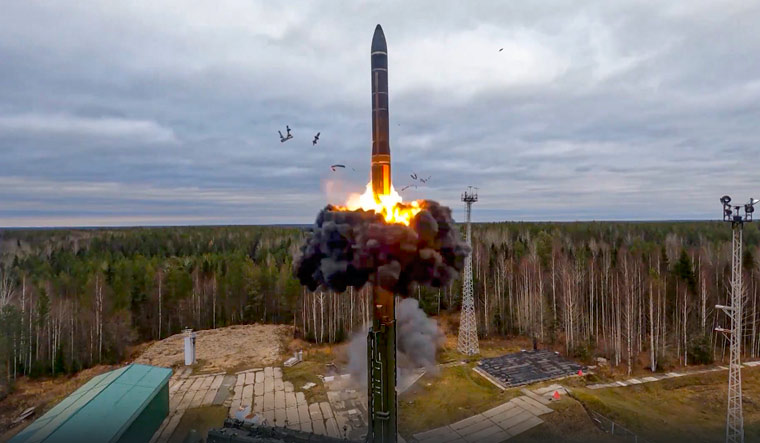President Vladimir Putin on Thursday said that Russia has successfully tested the experimental nuclear-powered cruise missile 'Burevestnik'. Russian state news agency RIA Novosti quoted Putin as saying the "last successful test of the Burevestnik, a global-range cruise missile with a nuclear installation, a nuclear propulsion system, has been conducted."
But, what is the Burevestnik aka the 'Storm Petrel'? Why is this cruise missile so potent?
The world first heard of Burevestnik from Putin in 2018 during his address to the Federal Assembly. He was elaborating on Russia's plan to develop a new generation of intercontinental and hypersonic missiles when he shed light on Burevestnik and Sarmat missiles. "It is a low-flying stealth missile carrying a nuclear warhead, with almost unlimited range, unpredictable trajectory and ability to bypass interception boundaries," Putin said.
However, little was known about the Burevestnik, code-named Skyfall by NATO, until now, other than that its development programme ran into trouble due to failed tests. In 2019, the Western media reported that at least five Russian nuclear specialists were killed in an explosion near the White Sea, which scientists believe was caused by the Burevestnik.
The test and subsequent explosion allegedly released radiation. Russia, however, did not identify the weapon used.
The same year, the Nuclear Threat Initiative (NTI), an open-source analytical group, said that "there is a consensus in the press, with purported agreement from U.S. intelligence services, that the Burevestnik has been tested 13 times, with two partial successes." The NTI quoted Russian military expert Alexei Leonkov who called the Burevestnik "a weapon of retaliation, which Russia would use after Intercontinental Ballistic Missiles to finish military and civilian infrastructure and not leave a chance of survival."
The Burevestnik is a nuclear-powered, nuclear-tipped cruise missile intended to sustain extremely long flights. Its nuclear propulsion helps it stay aloft for a much longer time than other missiles and covers much more distance. "In operation, the Burevestnik would carry a nuclear warhead (or warheads), circle the globe at low altitude, avoid missile defences, and dodge terrain; and drop the warhead(s) at a difficult-to-predict location (or locations)," it said.
According to The International Institute for Strategic Studies, the ground-launched Burevestnik would have a range between 10,000–20,000km. This would allow the missile to be based anywhere in Russia and still be able to reach targets in the continental US.
Western experts have expressed apprehensions about whether missiles would enter service. However, the NTI report added in 2019: "While research and development of the power source are ongoing, no long-range tests have been successfully completed and deployment in the next decade is also unlikely."



